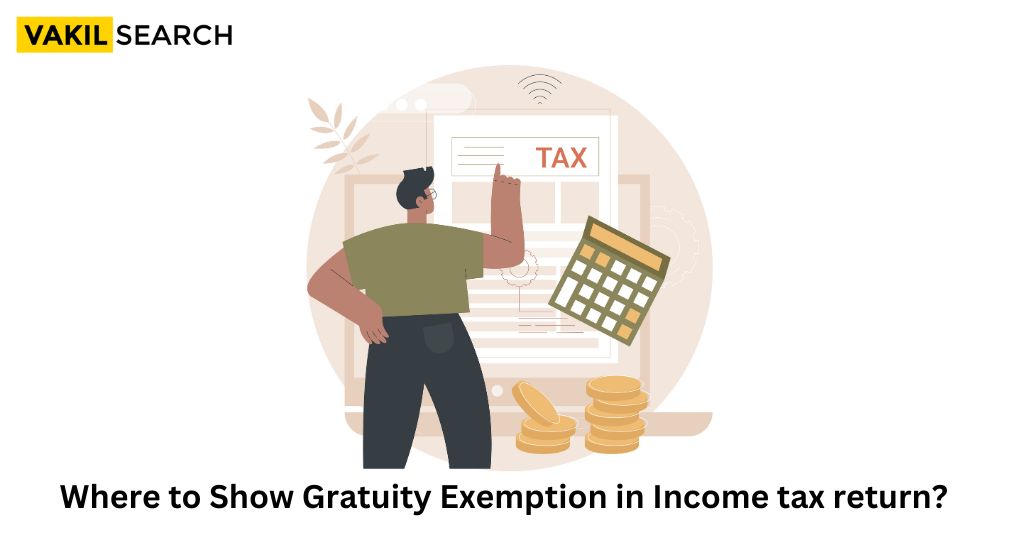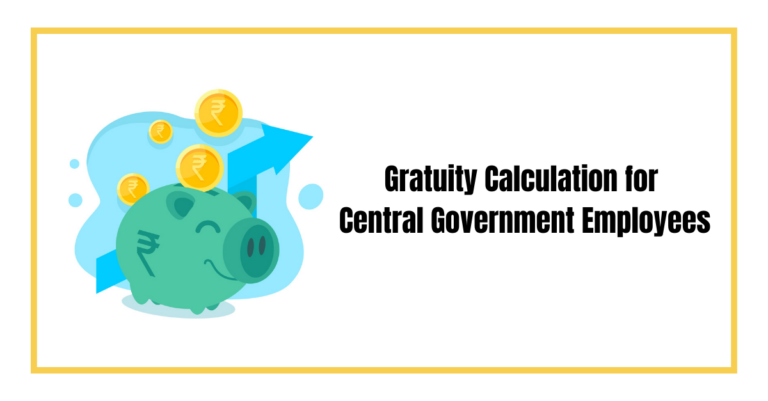If you have any queries about Where to Show Gratuity Exemption in Income tax return, then this guide will help you.
Sick leave, earned leave, casual leave, and various types of leaves are available to salaried employees. Some of these are paid leaves which can be carried over to the next year depending on your company’s rules. Several companies allow you to carry forward the leaves for an indefinite time. When you resign or retire, you can take the money by giving the leave days back to the company. When it comes to tax and ITR filing, there are indeed multiple issues involved with it. The problem is that, although everything is black and white, as stated by the government, we live in the grey due to a lack of knowledge. As everyone has half the knowledge available, some wrong information and details keep floating about. Under this guide you can learn about Where to Show Gratuity Exemption in Income tax return?
In terms of showing gratuity and leave encashment in ITR, this is one aspect which you should surely be thorough about. Reading on the internet is one of the best ways to get knowledge, but there could also be some wrong information. Hence, it is very important to get in touch with the right expert who can provide you with the authentic and right information. With things like ITR filing, you really cannot go wrong, and one should make sure to seek professional help. Due to this, you will get the money for all the leaves that you did not take, and this is known as leaves encashment.
What is Gratuity Exemption?
Gratuity is a reward for an employee’s long service. While it’s a gesture of gratitude, not all of it is taxable. In India, for government employees, gratuity is fully exempt. For private-sector employees, there are specific limits under the Income Tax Act. Accurate knowledge ensures you avail the rightful tax benefits.
Where to Show Gratuity Exemption in Income Tax Return?
Here are the few steps which tells the details about to check the gratuity exemption in Income tax return:
- Form Selection: Choose the right ITR form based on your income sources. Salaried individuals typically use ITR-1 or ITR-2.
- Report in ‘Salaries’ Head: Include your total gratuity amount (both exempted and taxable portions) under the ‘Salaries’ head.
- Exempted Amount Entry: Indicate the exempted gratuity portion under ‘Income exempt under section 10’.
- Refer to Form 16: Your employer-provided Form 16 breaks down the gratuity received and exemption calculated. Use it for accurate reporting.
- Documentation: Retain all related documents, like gratuity calculations and proofs, to simplify any future tax queries or verifications.
The Process Of Leave Encashment
Salaried employees working in the government or private sector mainly get equal work benefits regarding pay scale, tax deductions, and leaves. The employees are subjected to pay income tax if the annual income exceeds the limit as the income tax department advises. The employer will deduct some amount from your salary account and deposit the same in the Provident fund account. The Provident fund is easily accessible for the employee throughout the employment term and after retirement. You will also be offered incentives and allowances like food. Travel and accommodation during the employment term. The employee can carry forward the leaves if they are not used in one year and can later ask for the encashment on behalf of the leaves untaken.
What Do You Need To Know About The Leave Encashment?
The leave encashment terms mainly refer to the compensation on the payment you get in return for unused leaves. You can use the cache in the accumulated leave at any time during your employment, including when you are likely to retire, continue working, or even quit. In private companies, it depends on the employer as some companies end up reimbursing the employees for the unused leaves in the next year. Conversely, some employers also allow employees to carry over unused leaves. The company will pay you for all the untaken leaves if you leave the company at any time.
Where to Show Leave Encashment in ITR?
Leave encashment refers to the amount received by an employee in lieu of the leave balance not availed. For many taxpayers, it’s essential to understand the proper reporting of this income in the Income Tax Return (ITR) to ensure accurate tax computation. Here’s where and how to show leave encashment in the ITR:
- Form Selection: First, select the appropriate ITR form. For salaried individuals, it’s usually ITR-1 or ITR-2, based on other sources of income.
- Exempt and Taxable Portion: Not all leave encashments are fully taxable. For government employees, it’s typically exempt. For others, a portion might be exempt based on specific conditions.
- Report under ‘Salaries’: The taxable portion of leave encashment should be reported under the ‘Salaries’ head in the ITR.
- Schedule ‘Exempt Income’: If you have an exempt portion, report it under the section titled ‘Income exempt under section 10’ in the form.
- Documentation: Always keep the relevant proofs, like leave encashment calculations and employer certificate, handy. This aids in any future verification by the Income Tax Department.
- Double-check Details: Ensure the leave encashment amount aligns with your Form 16 provided by your employer.
In summary, proper reporting of leave encashment ensures that taxpayers pay the correct amount of tax and remain compliant with the Income Tax Act’s provisions.
The Benefits Of Such Leaves For The Company And The Employees
- In case of the medical emergencies,, employees can avail of the medical leaves, which are entirely extendible.
- Maternity and paternity leaves are also available, which are helpful for working women during pregnancy.
- Holidays are the best leaves where the employees can enjoy the festivals and make the most of their family time.
- Availability of any study leaves can help the employees to advance their knowledge levels and skills further by adding better flexibility and confidence in the work.
- Companies can get several benefits from study leaves. Employees will be trained with new skills and get better knowledge which further adds flexibility and confidence while working.
- Paid leave granted by the companies allows the employees to balance their work life and create some sense of trust while working within the company. Additionally, companies must take care of the employees in all conditions and employees, which must be returned with generosity by giving the best operational performance.
The Labour Act Must Be Considered
All the organisations have some working guidelines which the employees need to follow.
- All the companies in India should set the regulations set by the labour act so that the recruitment process is easy and the company is on the same page as the government regarding the basic pay scale provided as per the minimum wages and other employee protection guidelines. Hits organisations must follow the regulations provided to secure the rights of the employees.
Tax And Leave Encashment
Employment Term – Leave Encashment
The employee needs to fill out form 10 e to get the tax relief for the tax engagement. The form would be available on the eportal of the income tax department, and the employees need to submit it online. The tax paid during the encashment would be income tax from the salary.
Leave Encashment After The Retirement Of Resignation
The employees can avail of encashment through the accumulated paid leave at the time of retirement or resignation. But some conditions depend on which organisation you’ve worked and decides how much you deserve. When the employee has worked in any central or state government organisation, They can claim the paid leave encashment with full exemption from the tax.
[/box]
No Income Tax Will Be Charged to Legal Nominees on the Amount They Will Receive
Employees in the private sector are likely to receive leave encashment whenever they retire or resign from the company. The maximum tax exemption amount for the leave encashment is three lakhs, and the amount beyond it will be taxable. The exempt leave encash is calculated as per section 10 A of the Income Tax Act. Above all, leave encashment processes are completely transparent and easy to avail by employees during or after employment. The Government of India has provided the labour act in which the employees must get equal rights, leaves, and wages. The leave encashment policy works perfectly for all employees. The encashment amount can be useful further for important things, including healthcare education for the kids and personal savings.Hence encashment leaves are crucial and you must know the basics of it before you avail it.
Conclusion –
To know in and out Where to Show Gratuity Exemption in Income Tax Return and leave the encashment in the IT process, then Vakilsearch experts can be of good help here.
Read more










